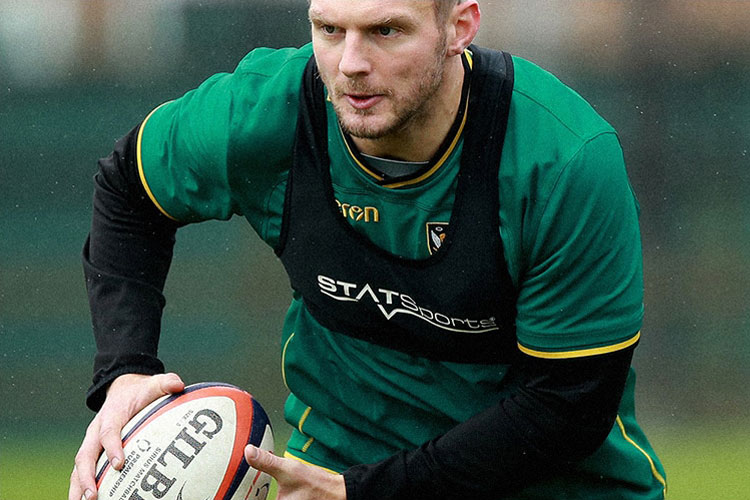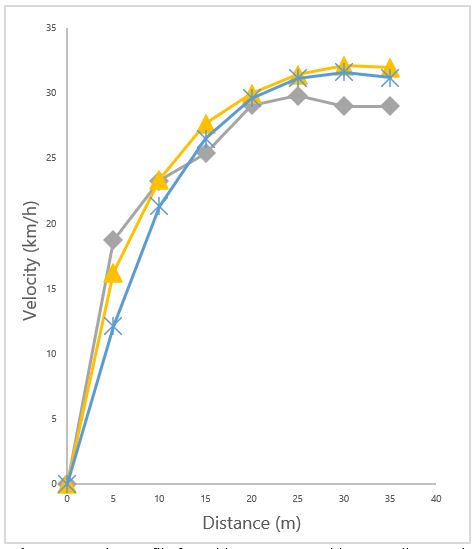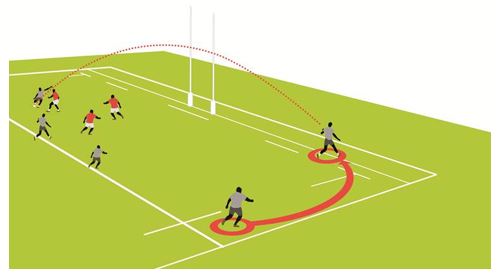
13 May Tactical and Technical Application of GNSS Technology in Rugby Union
Introduction
Research surrounding modern day load management suggests that performance and medical staff are embracing an increasingly holistic scientific approach to measuring both the physical demands of competition and training in team sports (1)(2).
By monitoring traditional external load markers such as Total Distance, High Speed Running and Sprint Distance in isolation, practitioners have begun to recognise the limitations associated with this approach and how it may hinder the aspirations for instilling a holistic approach.
West et al’s study (3) “Is Heterogeneity in Data Capture Holding Us Back” indicates that the data derived from GNSS technology, alongside the accelerometer derived metric “collision counts”, is deemed to be utilised most frequently and of most value to inform practice.
This shows the existing multi-facet importance of GNSS technology for both performance and load monitoring.
However, the purpose of this insight is to go beyond the current application of GNSS technology and explore potentially untapped avenues within the Apex unit’s capability which can be used to assist in the analysis of the tactical and technical performance in rugby union.
Practical Application – Identifying KPIs
Key performance indicators (KPI) can vary per league, team and to a degree the players physical capabilities.
Therefore, choosing the correct KPI and applying them to your squad can be challenging. Relaying the appropriate data back to players, coaching staff and getting “buy-in” can be another hurdle.
With regards to Rugby Union, there have been many published KPIs such as “Possessions Kicked”, “Positive Kicks” and “Line Breaks per Match” (4), this can be supported by the work done by Vaz, Hendricks and Kraak (5) which summarises “Possession Kicked” to be an offensive performance indicator.
Similarly, “Kicks in General Play” was one out of two discriminators between winners and losers in Super Rugby (6). What if specific KPIs could now be quantified by providing game-related statistics for performance?
This author recognises a potential application of physical performance metrics to add another dimension to measuring existing technical and tactical KPIs. Let us discuss the following metrics used in conjunction with two sport specific KPIs:
- Acceleration to measure the level of ‘Intent from Restarts’.
- Max Speed to measure ‘Intent from Kick Chases’, such as player “A” achieved 85% Max Speed for the first kick chase.
For the purpose of this insight, the term “intent” is used to describe the amount of effort exposed by the player relative to their max during the KPI i.e. % Max Speed, % Max Acceleration.
Applied Use in the Field
A restart, defined by World Rugby (7) illustrates that the ball must travel at least 10 metres when kicked, the chasers must start from behind the kicker (either 22m or 50m line) and can only be put on side once the chasers run past the kicker.
This indicates that the chasers are likely to be running from a standing start. Therefore, the acceleration metric can be best applied as it has a multitude of outputs related to performance.
Firstly, the magnitude of intent to regather the ball after the restart. In the latest STATSports software, SONRA, this can be quantified through accelerations (z1-z6), to see what magnitude of acceleration that player reached (ranging from 0.5m/s/s – 10m/s/s) and how many metres the player accelerated for in each acceleration zone (ranging from accelerations total distance z1-z6).
This could be vital in determining the level of intent for each player to re-gain possession.
Kick Chase, categorised under Kicks in General Play, is deemed to be another important KPI within rugby.
Max Speed is regarded as an important metric of performance in addition to injury surveillance, hamstring health, and the prevention for soft tissue injuries (8).
We can use this metric to quantify the intent for the KPI Kicks in General Play. In SONRA, practitioners can extract the raw data to calculate a sprint profile.
After the completion of a speed session with 100% intent, a sprint profile can be generated from the raw data extracted from the Apex unit. A sample sprint profile is shown below in Figure 1. This can be beneficial for the KPIs “Restarts” and “Kick Chases”.

Figure 1. Sprint Profile for Athlete 1 (grey), Athlete 2 (yellow) and Athlete 3 (blue) calculated from the raw data export in the software, SONRA.
Practitioners can now use this knowledge from the profile to analyse the intent of each sprint, alongside the max speed achieved during each Kick Chase.
This can be used to extrapolate the speed at which the player hits with the corresponding distance, red solid line in figure 2.

Figure 2. The kick chase performed by the team in grey can be used to quantify the player’s max speed (%) from the starting to end point, shown by the red solid line.
With this knowledge, practitioners can now quantify the level of intent (% Max Speed) through the analysis techniques provided and coaches can use this to illustrate the level of intent of the selected KPI.
Table 1. Example of the performance outcome using intent (% Max Speed) for the KPI Kick chase.
| Key Performance Indicator | Intent (% Max Speed) |
| Kick chase 1 – Player A | 70% |
| Kick chase 2 – Player A | 95% |
This metric can be created using SONRA’s scientific calculator feature (Figure 3) and visualised in the software through a range of dashboards and tables.

Figure 3. Generation of the custom metric “% Max Speed” through the scientific calculator in the SONRA software.
The data generated from this analysis allows the reader to examine the level of intent for the chosen KPI through acceleration metrics (acceleration total distance and acceleration z1 – z6) and % Max Speed, all of which can be customised within SONRA.
Practical Considerations
Consideration must be given when applying the proposed concept based on the moments of the game and tactical responsibilities of each player.
Care must be taken when deciphering between level of intent and fatigue (usually shown in the later stages of performance), whereby the intent can be high, but the player produces a low percentage of max speed.
These scenarios would warrant further discussion amongst members of the performance and medical staff to interpret the data based on experience and contextual knowledge before informing practice.
Conclusion
Using the appropriate KPI in collaboration with GNSS derived metrics from the Apex device, practitioners may potentially infer on performance both tactically and technically by providing game-specific indicators.
This information may not only beneficial for the performance staff, but also the coaching staff.
Author Details
Name: Matthew Hamilton, BSc, MSc Research (pending)
Department: Account Manager – Sports Science
Email Address: [email protected]
References
- Halson, S. (2014). Monitoring Training Load to Understand Fatigue in Athletes. Sports Medicine, 44(S2), pp.139-147.
- Harper, D., Carling, C. and Kiely, J. (2019). High-Intensity Acceleration and Deceleration Demands in Elite Team Sports Competitive Match Play: A Systematic Review and Meta-Analysis of Observational Studies. Sports Medicine, 49(12), pp.1923-1947.
- West, S., Williams, S., Kemp, S., Cross, M. and Stokes, K. (2019). Athlete Monitoring in Rugby Union: Is Heterogeneity in Data Capture Holding Us Back?. Sports, 7(5), p.98.
- Hughes, M., Hughes, M., Williams, J., James, N., Vuckovic, G. and Locke, D. (2012). Performance indicators in rugby union. Journal of Human Sport and Exercise, 7(2), pp.383-401.
- Vaz, L., Hendricks, S. and Kraak, W. (2019). Statistical Review and Match Analysis of Rugby World Cups Finals. Journal of Human Kinetics, 66(1), pp.247-256.
- Mosey, T. and Mitchell, L. (2020). Key performance indicators in Australian sub-elite rugby union. Journal of Science and Medicine in Sport, 23(1), pp.35-40.
- worldrugby.org. (2020). World Rugby Laws – World Rugby’s Law Education Web Site. [online] Available at: https://laws.worldrugby.org/?highlight=restart&law=12 [Accessed 7 Feb. 2020].
- Buckthorpe, M., Wright, S., Bruce-Low, S., Nanni, G., Sturdy, T., Gross, A., Bowen, L., Styles, B., Della Villa, S., Davison, M. and Gimpel, M. (2018). Recommendations for hamstring injury prevention in elite football: translating research into practice. British Journal of Sports Medicine, 53(7), pp.449-456.